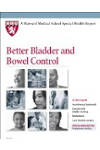Advertisement
The bladder holds between 10 and 14 ounces of urine comfortably in most adults. Urine is produced constantly by the kidneys and then flows into the bladder for storage. The urine is held in the bladder by a valve-like muscle called the sphincter, which is located at the base of the bladder.
When the bladder becomes full, a reflex reaction occurs to empty the bladder. The sphincter muscle relaxes to open the bladder outlet and the bladder wall contracts to squeeze out the urine. In infants, this reflex occurs automatically. After toilet training, we are able to control the reflex so the bladder empties only when we "give it permission."
If the bladder does not empty fully, urine may build up and cause the bladder to become enlarged. The distended bladder may leak, a condition called overflow incontinence.
The treatment depends on the cause, which generally fall into two categories:
When the bladder becomes full, a reflex reaction occurs to empty the bladder. The sphincter muscle relaxes to open the bladder outlet and the bladder wall contracts to squeeze out the urine. In infants, this reflex occurs automatically. After toilet training, we are able to control the reflex so the bladder empties only when we "give it permission."
If the bladder does not empty fully, urine may build up and cause the bladder to become enlarged. The distended bladder may leak, a condition called overflow incontinence.
The treatment depends on the cause, which generally fall into two categories:
- blockage of the bladder outlet
- failure of the bladder to contract enough to push out the urine

More About this Book
Harvard Medical School Better Bladder and Bowel Control
Most people take bladder and bowel control for granted until something goes wrong. Then, unexpectedly, they find themselves hurrying to get to a bathroom on time, avoiding certain situations for fear...
Continue Learning about Bladder Disease
Important: This content reflects information from various individuals and organizations and may offer alternative or opposing points of view. It should not be used for medical advice, diagnosis or treatment. As always, you should consult with your healthcare provider about your specific health needs.
